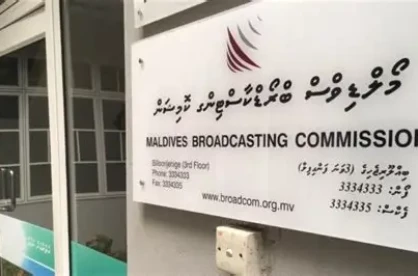Floating the exchange rate
Managing the currency exchange rate is not as simple as it may seem to most casual observers.

Source - Twitter
Managing the currency exchange rate is not as simple as it may seem to most casual observers.

Source - Twitter
The Maldivian government first implemented a floating exchange rate in 1987. The exchange rate had been MVR8.50 at the time of initial change, but almost immediately spiked to MVR12 reflecting the economic reality of the time. The exchange rate regime was changed once again in 1994, pegging the Maldivian Rufiyaa value to that of the United States Dollar.
As of 2011, the exchange rate of the Maldivian Rufiyaa (MVR) to the United States Dollars (USD) is fixed within a range — with a low point of MVR10.28 and a high point of MVR15.42 to USD1. It should however be noted that, since this latest implementation, the fixed exchange rate has adamantly remained at the highest possible value.
The recent limitations imposed on foreign exchange cause people to choose the foreign exchange black market to exchange USD as well as other foreign currency. The rates of the black market constantly change with the demand and supply of foreign currency to the Maldives. During the recovery period following the worst of the COVID-19 pandemic, the tourism industry hit rock-bottom and USD supply to Maldives was at an extremely low point. During these times, the USD exchange rate in the black market was reported to be in the ballpark of MVR18 – MVR20. As the economy recovered and tourism slowly began to start up again, the black market rates fell. The current average exchange rate for USD in the black market is reportedly MVR17 as of the beginning of April 2022.
In light of the recent decline in exchange rate in the market, the government can entertain the option to allow the exchange rate to float freely, being determined by market forces. A floating exchange rate would adjust accordingly with the changes in market forces.
A floating exchange rate means that the government will require a substantial foreign currency reserve specifically to keep the exchange rate stable. Given the current foreign currency reserve level of MMA, this might not be possible.
The floating exchange rate also becomes a direct representation of the country’s economic policies and activities. Therefore, the country will be more active in improving macroeconomic policies and boosting the efficiency of the market.
However, floating the exchange rate has the potential to amplify existing problems within the economy. The value of the currency could potentially depreciate and high inflation would be increased further due to higher demand for goods. Imports could become substantially more expensive, and as the Maldives is unable to locally produce many goods utilised in daily life, the Maldivian economy could face many issues with meeting the demand for goods within the country.
Fixed exchange rate provides security, eliminates the uncertainty regarding future rates, and allows for planning and preparing for future investments. Foreign investors would be more inclined to invest within the country if the exchange rate is stable, as it minimizes the risk of unexpected losses. The multiplier effect of these investments would boost the Maldivian economy quite substantially, as we have seen in the past. The fixed rate also serves to curb potential devaluation of the Maldivian currency, which is a problem faced by many other developing countries.
Public and expert opinions are conflicted between both types of exchange rates, and rightly so as both systems have their advantages, and disadvantages.
Some parties have expressed that the Maldivian economy is now at a point where floating the exchange rate is the best course of action — the current speaker of Parliament expressed his thoughts on the matter in a tweet earlier this month stating that with the drop in black market rates, this time period is ideal to let the MVR exchange rate free float, and possibly eradicate the black market for foreign exchange entirely.
However, experts believe that a country in Maldives’ economic situation would be more compatible with a fixed exchange rate for economic safety. The Maldives has consistently shown higher outflows of foreign currency than inflows in the past five years. In 2019 alone, the state current account shows total inflows of foreign currency were recorded as USD3.8 billion, while the outflows were USD5.3 billion. The resulting deficit of USD 1.5 billion for that year and the consistent deficit balances of other years are brought about by the increasing amount of debt being taken on through loans and assistance agreements being made with many foreign parties. As the Maldives is already heavily indebted to other countries, floating the exchange rate and the possible subsequent drop in currency value would cause the existing debt to become even more expensive.
Although MVR is the country’s legal tender and used in most domestic transactions, USD is accepted as a currency substitute and is also used as a store of value in the Maldives. Furthermore, the use of foreign currency in loans and low levels of domestic currency savings contribute to very high levels of credit dollarisation, making the Maldives highly incumbent on USD, the currency that the domestic currency is pegged to. This is due in part to the substantial foreign currency contributions of the tourism industry to the country’s economy — thus the Maldives is considered a highly dollarised country.
The Maldives Monetary Authority (MMA) has announced their intention to reform policies and to support de-dollarisation in Maldives, as the Maldives is currently highly dependent on foreign currency and exchange. There are various avenues to explore in strengthening the value of the Maldivian Rufiyaa and in time, becoming less dependent on the value of a foreign currency.
There have been discussions of printing money to enhance the economy. The People’s Majilis has even passed a motion granting the government to print MVR2.5 billion within the year 2022. However, this step has been deemed unsuitable for the current economic situation by the International Monetary Fund (IMF). Instead, the IMF has recommended that the Maldives focus their efforts on tighter monetary policies with higher compatibility with the pegged exchange rate, lower external debts and the accumulation of more reserves.
Issuing further bonds to foreign parties would increase the already substantial foreign public debt. However, issuing bonds to the private sector could result in less outflow of money from the country and serve to strengthen the value of MVR while securing foreign currency reserves for other purposes in the process. On that note, the Ministry of Finance has issued an invitation to subscribe for treasury bills, or T-bills, with denominations in MVR in April 2022. The value of these T-bills range from MVR200 million to MVR1.1 billion.
MMA aims to provide incentives to financial institutions and other economic players by making monetary policies that give more priority to MVR. Redeveloping foreign exchange regulations, and legislation, as well as reviewing the exchange rate regime to maintain rate stability are also important steps that also need to be looked at for the near future.



